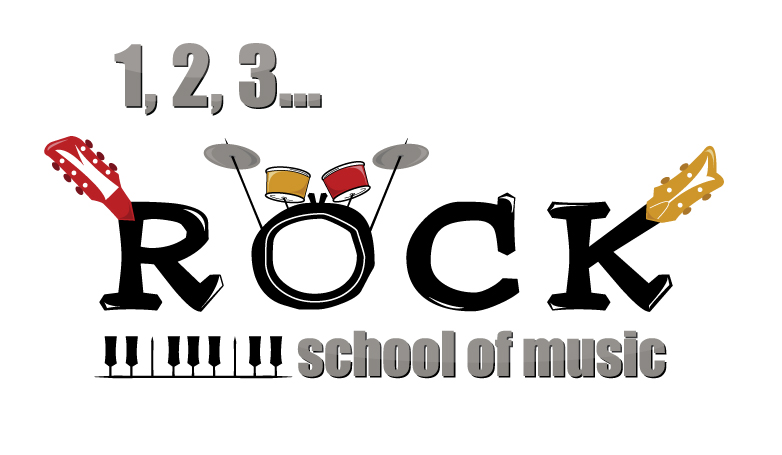Music plays a significant role in the socialization of children and adolescents. Modern music is present almost everywhere, and it is readily available. Research on popular music has explored its effects on schoolwork, social interactions, mood, and behavior.
—
August 14, 2017
Listening to popular music is considered by society to be a part of growing up.2 Music provides entertainment and distraction from problems and serves as a way to relieve tension and boredom. Some studies have reported that adolescents use modern music to deal with loneliness and to take control of their emotional status or mood.2,4 Music also can provide a background for romance and serve as the basis for establishing relationships in diverse settings.2 Adolescents use music in their process of identity formation,4–11 and their music preference provides them a means to achieve group identity and integration into the youth culture.5,7–9,12,13 Some authors have suggested that popular music provides adolescents with the means to resolve unconscious conflicts related to their particular developmental stage2,7,12,14 and that their music preference might reflect the level of turmoil of this stage.14–17
Adolescents’ choice of music and their reactions to and interpretations of it vary with age, culture, and ethnicity.2,13,14,18–25 Research has shown that there also is a difference in these variables between the genders.25 Female adolescents are more likely than male adolescents to use music to reflect their emotional state, in particular when feeling lonely or “down.”2,26,27 Male adolescents, on the other hand, are more likely to use music as a stimulant, as a way to “boost” their energy level or to create a more positive image of themselves.2,4,26
To understand the importance of music in the life of adolescents, a survey performed in the early 1990s of 2760 American adolescents aged 14 through 16 years revealed that they listened to music an average of 40 hours per week.28 In another study in 2000, North et al4found that a sample of 2465 adolescents in England reported listening to music for an average of 2.45 hours per day. On a study performed in 2005 to assess media use of 8- to 18-year-olds in the United States, Roberts et al25 reported that on a given day, 85% of 8- to 18-year-olds listen to music. Although time devoted to listening to music varies with age group, American youth listen to music from 1.5 to 2.5 hours per day. Still, a study performed with a small sample of at-risk youth revealed an average of up to 6.8 hours of music-listening per day. Furthermore, Roberts et al. found that 33% of those listening to music did so while performing other tasks or activities. These data support the idea that the prevalence of music-listening in adolescents may be even higher than that of television viewing. The reason for this is that popular music is present almost everywhere, from the supermarket to the mall, often as background music. It also is easily available through the radio, various recordings, the Internet, and new technologies,11,25 allowing adolescents to hear it in diverse settings and situations, alone or shared with friends.
Adolescents are not the only young consumers of popular music. A study with 100 fourth- through sixth-graders revealed that 98% of these children listened to popular music, 72% of them on “most days” or every day.30 Furthermore, it has been reported that children 8 to 10 years of age listen to music an average of 1 hour per day.25 With many children and adolescents listening on iPods or other devices using headphones, parents may have little knowledge of what their children are listening to.
Research on popular music has explored several areas such as its effects on schoolwork,31social interactions, mood and affect,20,26,27,32,33 and particularly behavior.10,11,34–36 Several theories have been developed to explain the relationship between music and behavior,15,37,38 and some studies have demonstrated that there is a relationship between music and emotions, regardless of age.20,23,27,39–41 Although the emotional response to music depends on the way it is presented, it is also true that it is closely related to the age of the listener and the experiences or preconceived ideas they bring to the music.2,14,39 The effect that popular music has on children’s and adolescents’ behavior and emotions is of paramount concern.40 There is particular concern related to the lyrics of some genres of music and their effect on children and adolescents.3,10,11,42–45
Lyrics have become more explicit in their references to drugs, sex, and violence over the years.11 A content analysis of the top 10 CDs performed by the National Institute on Media in 1999 revealed that each of these CDs included at least one song with sexual content. Forty-two percent of the songs on these CDs contained very explicit sexual content.46 Lyrics of some music genres, such as rock, heavy metal, rap, and new emerging genres such as reggaeton, have been found to revolve around topics such as sexual promiscuity, death, homicide, suicide, and substance abuse.9,13,17,43,45,46–53 Most recently, some rap music has been characterized by the presence of explicit sexual language in its lyrics as well as messages of violence, racism, homophobia, and hatred toward women.9,10,42,54 Drug, tobacco, and alcohol use also tend to be glorified in these songs.
In refuting concerns about the effect of lyrics, some have argued that children and adolescents use music only for entertainment, that little or no attention is paid to the words, and if any attention is given, understanding tends to be limited and related to the experiences lived by the listener.32,55 However, other studies have demonstrated the contrary.56 Approximately 17% of male adolescents and 25% of female adolescents expressed that they liked their favorite songs specifically because the lyrics were a reflection of their feelings.2 Also, it has been found that the more importance adolescents give to a certain type of music, the more attention they will pay to the lyrics.2,55,57,58Furthermore, Knobloch-Westerwick et al. have stated that although young listeners might not understand all the details in lyrics, they recognize enough to obtain a general idea of the message they bring.11
Regarding the effects of popular music on behavior, several studies have demonstrated that preference for certain types of music could be correlated or associated with certain behaviors,*such as the association of drug and alcohol use with “rave” music or electronic music dance events.13,50,51,62 Roberts et al39 performed a study in 1997 at an adolescent clinic, and their results suggested that probably the best predictor of risk in adolescents related to music is their self-report of negative feelings or emotions when listening to any music. The authors of that study described an association between negative emotional response to music and risk-taking behaviors and even suggested that what triggers risky behavior in some adolescents is the negative emotional response rather than the type of music. Scheel and Westefeld61 supported this suggestion in 1999. Heavy metal and some rock music have been associated in some studies with an increased risk of suicide.17,61,63,66,67 Fans of heavy metal music have been reported in the literature to have more problems with school authorities and teachers than students who are not fans of that type of music.2 Heavy metal music-listening has also been associated with increased depression, delinquency risk behavior,63–65 smoking, and conduct problems.60 Fans of heavy metal and rap music showed a greater tendency to engage in reckless behavior than their peers who were not fans of those types of music.2,14,37,68 A study performed to explore the possible effect of heavy metal music containing either sexually violent or non-violent lyrics on males’ attitudes toward women revealed that those exposed to heavy metal music, with either sexually violent or non-violent lyrics, showed significantly more negative stereotyped attitudes toward women than those in a group instead exposed to classical music.2,69 Likewise, in a study performed by Fischer and Greitemeyer,42 men who listened to misogynistic lyrics showed increased aggressive responses toward women as well as a more negative perception of them.
In a study in which adolescents who preferred heavy metal and rap music were compared with those who preferred other types of music, results indicated that the former consistently showed below-average current and elementary school grades, with a history of counseling in elementary school for academic problems.14 A study performed in 1999 with a sample of 345 mothers from public schools revealed that 47% of the mothers believed that violent messages in rap music contribute to school violence70; yet, according to a 2007 report from the Kaiser Family Foundation on parents, children, and the media,44 only 9% of parents revealed being concerned about inappropriate content in music.
The preference for heavy metal music, rap, and associated genres among adolescents must alert us to an increased vulnerability and tendency toward risky behaviors. Adolescents at risk and with a feeling of alienation because of previous failures or problems tend to prefer these types of music, which might reflect their pessimistic view of life and the world.2,9,14,17,19,37,71 Correlational studies, however, have inherent limitations and cannot identify cause-and-effect relationships, but the associations reflect the status of the current research.
Research related to music and its effects on children and adolescents has been expanded into another expression of popular music: the music video. Music videos are appealing to children and adolescents. Considering that music videos mix two media that are attractive to youth (television and popular music), it is important to study their effects on a young audience and to be concerned about the messages these music videos promote.30,72 Music videos have been widely studied.29,30,55,72–93 They are mainly classified as either performance or concept videos. For a performance video, an artist or a group is filmed during a performance, usually a concert. Concept videos, on the other hand, tell the viewer a story that may or may not evolve from the song. This story may sometimes add content to the lyrics and provide a particular interpretation that is reinforced every time the viewer hears the song.72,73,75 As with popular music, the perception and the effect of music-video messages on children and adolescents is related to the age and developmental and emotional stage of the viewer, as well as the level of exposure.
The prevalence of music-video–watching has been studied in both the United States and Europe.30,79,90,92,94 A study of 100 fourth- to sixth-graders revealed that 75% of them watched music videos, with 60% of them self-describing their frequency of viewing videos as either “pretty much” or “a lot.” Of these children, 62% watched music videos either “most days” or “every day,” and 7% watched them even before going to school.30 In 2003, a report of the Kaiser Family Foundation90 revealed that 3 of 4 of those in the 16- to 24-year-old group watch MTV, 58% watch it at least once a week, and 20% watch it for an hour or more every day. More recently, a study revealed that a sample of 12- to 15-year-olds watched music videos on an average of 4.3 days per week.92
Research on music videos has been focused mainly on content analyses. A study published in 1997 by DuRant et al76,82 described an analysis of 518 music videos on four television networks (MTV, VH1, CMT, and BET). This study revealed that the percentage of violence in music videos ranged from 11.5% to 22.4%, with the most violent videos having been presented on MTV. When analyzed according to the type of music, rap videos had the highest portrayal of violence (20.4%), closely followed by rock videos (19.8%). Using the same sample, another study revealed that although the percentage of videos that portrayed alcohol use showed no significant differences among networks, the percentage portrayed was still significant, ranging from 18.7% to 26.9%. Of the networks, MTV had the highest percentage of alcohol representation and also the highest percentage of videos that portrayed smoking behaviors (25.7%). Of these videos, rap music videos showed a higher content of alcohol or tobacco use than did other types of videos.75 In 1998, Rich et al82reported on the findings of content analyses that looked for gender or race differences in aggressors or victims of acts of violence portrayed in the same sample of 518 music videos. The analyses showed that black individuals were overrepresented as aggressors (25%) and as victims (41%), compared with the percentage of black individuals in the general population (12%). Studies performed by Smith and Boyson in 200293 and Gruber et al. in 200591 validated these findings.
Analysis of the content in music videos is important because research has reported that exposure to violence, sexual messages, sexual stereotypes, and use of substances of abuse in music videos might produce significant changes in behaviors and attitudes of young viewers.† Frequent watching of music videos has been related to an increased risk of developing beliefs in false stereotypes and an increased perceived importance of appearance and weight in adolescent girls.83 In studies performed to assess the reactions of young males exposed to violent rap music videos or sexist videos, participants reported an increased probability that they would engage in violence, a greater acceptance of the use of violence, and a greater acceptance of the use of violence against women than did participants who were not exposed to these videos.29,35,77,78,92
In 1999 Kalof84 reported that college students who were exposed to videos with stereotyped sexual images showed more acceptance of adversarial relationships than those who were not exposed. Kaestle et al92 reported in 2007 that in a group of seventh- and eighth-grade boys, watching music videos and professional wrestling was associated with an increased acceptance of date rape. A survey performed among 214 adolescents revealed that there was an association between music-video–watching and permissive sexual behaviors.76 It has also been reported that after watching MTV, adolescents’ attitudes were more accepting of premarital sex.52,53,80 A survey performed among 2760 American adolescents demonstrated that listening to music and watching television and music videos more frequently was associated with increased risky behaviors68 and alcohol use85,86; these results were validated by VandenBulck and Beullens,94 who demonstrated a longitudinal relationship between adolescents’ exposure to music videos and alcohol use while going out to a bar, party, disco, etc. In 2003, Wingwood et al89 reported on a study in which 522 black female adolescents with a median exposure to rap music videos of 14 hours per week were followed for 12 months. After controlling for all the covariates, greater exposure to rap music videos was independently associated with a wide variety of risky behaviors such as increased promiscuity and use of drugs and alcohol, among others. Of importance, a study performed by Austin et al98 in 2000 revealed that the potential risks of exposure to music videos could be moderated by parental reinforcement and counter-reinforcement of conducts observed.
This article is a re-post, with small modifications, of “Impact of Music, Music Lyrics, and Music Videos on Children and Youth” an article published on pediatrics.aappublications.org by The American Academy of Pediatrics.
Click here to visit the original content.


